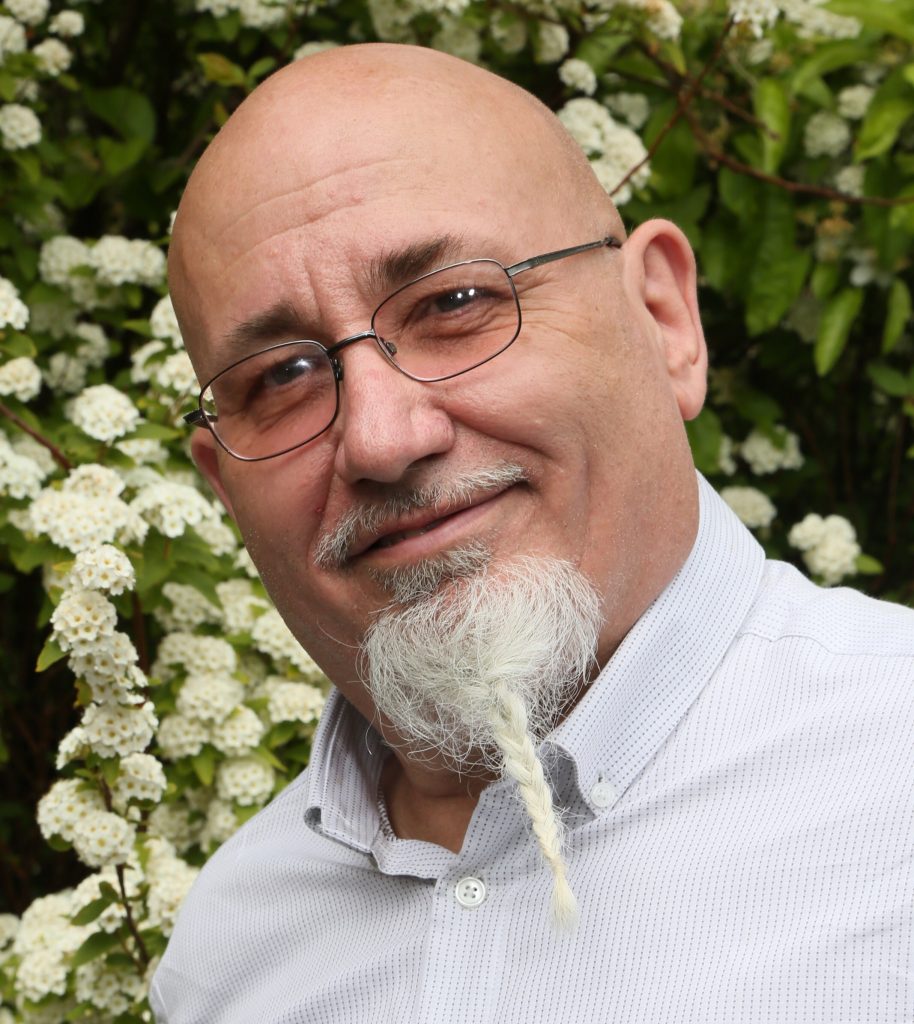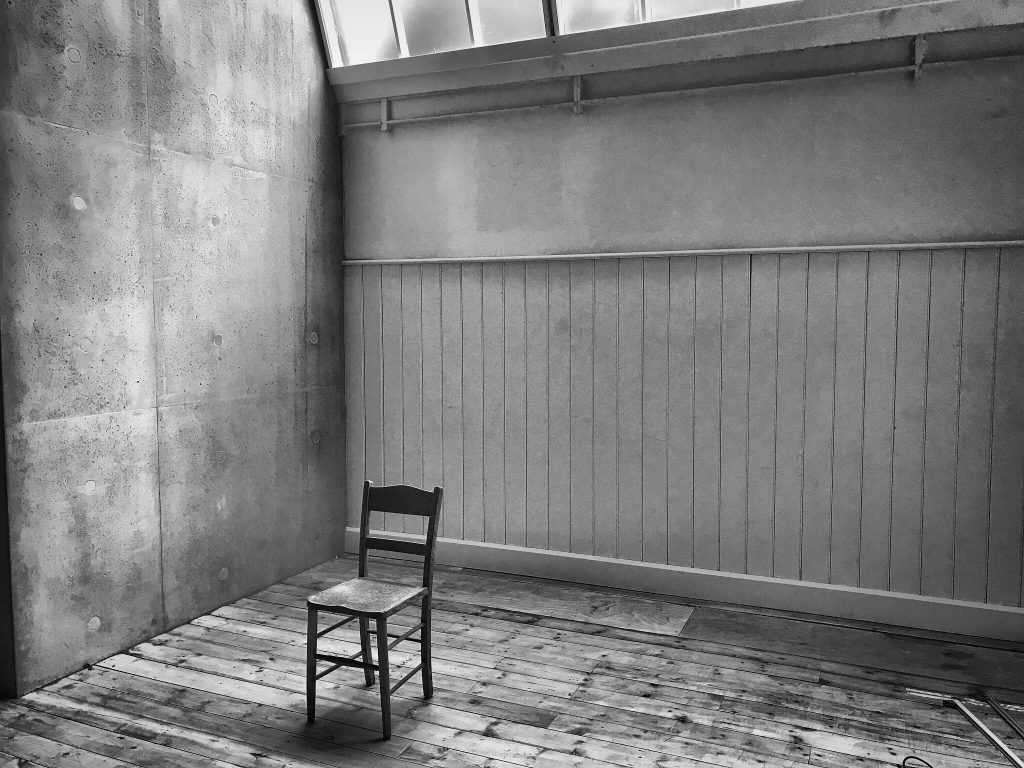
Jon Adams is the founder of Flow Observatorium, a national project initially granted funding from Arts Council England and now a Charitable Incorporated Organization. Flow Observatorium’s aim is to become a hub for neurodivergent artists, providing peer support and campaigning for recognition, parity of opportunity, and funding. This week Jon shares his passion for art despite a lack of support throughout his childhood. He also discusses his mission to ensure other autistic artists have the opportunity to create in their own space on their own terms.
Describe how you first became aware of your autism diagnosis.
I’ve always known I was different, but mostly through negative experiences, especially at school. It was before being autistic was really known about, so everyone assumed I was just different and often I was simply called thick or stupid. I would see the world in a rather different way. I was terminally curious, wondering what was above me in the sky and stars, what was underneath my feet in the rocks, and what happened around me? I was interested in history, science, etc. This saved me when I was being mistreated at school and I suffered trauma at an early age. I found people tricky as they often didn’t say what they meant or meant what they said. That was difficult to quantify as there were too many variables to cope with.
When I was identified as being dyslexic in 1999, in my late 30’s, I started to help others as well as write. I was teaching memory techniques and art to some dyslexic YP, and their supervisor asked me one day if I thought I might be autistic. I only knew what I read in the papers, so I went and looked it up in some more reliable books. She also lent me a copy of ‘Curious Tale,’ and I realised I also recorded everything in my head. I eventually self-dx’d as probably autistic and synaesthetic, but didn’t do anything about it.
Eventually my artwork gave the game away. Others said I was probably autistic, and, after one talk on a forthcoming project, I was approached to give a talk as part of an event on ‘autism and science-art’ by a leading organisation. I said yes not knowing the details, and then I found out it was with other artists Ben & Gabriel and Simon Barron Cohen at Cheltenham Science Festival. After the talk, the sponsors said I should apply to fund an arts project working at Cambridge University, which I did, and as part of this I was, I was able to get my autism diagnosis confirmed.
What were the most important factors to helping you develop a positive autistic identity?
It’s been very difficult as we live in a society that seems to consistently treat us as being broken, lesser, and unfortunately something to be ‘prevented.’ I soon met other autistic people, other advocates who were non-conforming to this traditional view. When I received my DX, everything started to make some sort of sense as with the dyslexia DX earlier. I could understand why I was different and why I experienced the world in a different way. I realised I’d masked most of my life, and the effects of this resulted in trauma to my mental health and confidence.
Autism was an advantage in my creativity, but a disadvantage in communicating with non-autistic people as they often misunderstood what I was saying or the support I needed. I needed someone to translate neurotypical behaviors and speech for me, but finding others who were similar to me made a huge difference. Real role models.
I advocate now because as a late-DX’d person, I’ve seen things from both sides, and I don’t want the next generations of autistic people to go through the crap I have had to. Yes, I feel empathy; yes I use metaphor, sarcasm and humour.
My DX was actually Aspergers, but due to the connotations and fake supremacy, some people add to the word; however, I don’t use this language. People expect me to be ‘high functioning,’ but I hate those words and the division and misunderstanding this label causes. I function on very differing levels day to day even minute by minute. In fact, the usage of that term often leads to individuals receiving no support as it’s assumed you don’t need any. Assuming what we do or don’t need and not asking autistic people may often harm us. There are more autistic people speaking out now, so I’m hoping for an attitudinal change that will lead to more individuals diagnosed autistic becoming part of society and not kept apart from society.

Tell me a little about Flow Observatorium. What makes it unique? What are its goals?
I realised early on before I was DX’d that if you were different, it was both an advantage and a barrier. I had to mask and learn diversionary skills early in life. I said I wanted to be an artist at age 6, but in junior school, a teacher tore up one of my pictures chosen by the headmaster to go on the wall in front of the class. My crime: I’d spelt my name wrong. But it was one of many traumas to come that not only made me vulnerable, but caused PTSD.
I never went to art collage, instead studying geology and geological time, which I was also quite good at. I started to draw afterwards again, but it was difficult as my self confidence had evaporated with the words ‘You will never be anything if you can’t even spell your own name.’
I eventually made it into the contemporary arts world where I realised there were huge barriers and little understanding. Many projects were done to ‘Neurodivergent people’ not with them by non ND people. These projects were not on our terms, and neurodiversity wasn’t recognised either. So there were other talented ND artists left frustrated, unaccepted, and unfulfilled due to barriers that then sometimes also caused mental health issues. There were neurological glass ceilings as it were, and it seemed we were expected to leave our differences at the door, but still shine. This is why I set up Flow– to challenge the system and champion Neurodivergent artists. If you want to see work that’s different, commission artists that see the world differently, but you have to work differently with them.
In a promotional video for Flow Observatorium, you said, “Art can help explain the world around us.” Can you give some examples of works you have created that serve this purpose?
I feel artists are there to translate the world around them, not only to others, but also to themselves. I don’t make autistic or dyslexic art for that matter, but everything I do or make will be through a different internal filter. My book illustration work was highly detailed, plus I was able to see images in 3D in my head (but no words!) and so is my conceptual work layered and detailed. I often make work from watching others or being socially engaged with them, which surprises people. One of the first times I did this was as an Artist in residency on the train network, where I mapped people’s journeys by challenging myself to sit with them and have conversations.
I was also head hunted by Sir Peter Brook to work on a play about synesthesia, and he encouraged me to write and perform my own work, which I now do. Often this work uses metaphors about the autistic experience to help others see glimpses of our lives and the way we experience the world. I’m often asked what being synesthetic is like. I tend to reply, “What’s it like not to be a synesthete?” – Words often don’t work, as they are mere shadows of experiences. I played the sound of seagulls in the turbine hall of the Tate Modern once to show what I heard in the space every time I entered.
Art translates both ways. My arts science work includes making music from Supernova and fMRI machines, and I mapped the Cultural Olympiad in the South of England in geological metaphor by writing down everything I did for 2 million minutes of my life in geological notebooks to make a map. This activity contributed to giving the game away that I was autistic.
But the organisational and social barriers have still existed throughout my life, and if you add in trauma and mental health issues, it’s difficult to get the opportunity to shine. The last project was ‘Democracy Street,’ commissioned by Parliament because I was an autistic pattern finder. I led the digital art social engagement celebration of the 2015 Magna Carta anniversary finding pattern and meanings in street names that represented people who’d made a difference to society. People can often see the real me in my artwork and poetry, but there is a cost to that displayed vulnerability.
In that same video, you mentioned how autistic artists see the world differently and need different environments to thrive. What does this look like for autistic artists? Are there aspects of the Flow Observatorium model that can be applied in other settings?
Often it’s assumed what we need or that we don’t need support or can fit in, but this often harms us. In no other minority would it be acceptable for ‘outsiders’ to impose ways of being, language, narrative, or identity on members of that minority, but autism seems fair game.
Autistic people are rarely asked what they need or employed on their terms, and this applies both in research and the arts. For autistic artists to thrive in society, we need respect, recognition, and parity of opportunity on our terms.
Autistic people are so stereotyped and spoken for not that it’s very hard for our voices to be heard. We should be given the space to create our own narrative and culture without interference. Often we are not asked what adjustments we need, and, when we ask for accommodations, they are often not seen as necessary. To some, autism is a business, and we’re simply a commodity, and this needs to change.
For autistic artists to thrive, we need changes to tradition. For example, autistic people should take the lead on networking and grant applications. Saying ‘this is the way we’ve always done things’ is the reason why autistic people are not included. We need arts organisations run by autistic people and for autistic people; then we can share our richness with society. We don’t need “autism friendly,” we need autistic-enabling, but we have to be the ones to write the rules.
What advice do you have for parents to nurture the interest in art of their younger autistic children or teens?
I was once told by a parent, “My son sits in his room all day and draws, and no matter what I do, I can’t make him socialise.” I replied, “Why make him fit your world? Encourage his creativity as a good thing, and one day he will open his world to you.” For me, mental health is the greatest barrier to being creative, so the biggest gift for me would have been the safe environments and understanding in the arts I never had.
I’d say encourage self confidence, encourage them as holistic people. Let them make, draw, and create whatever they want to make. Yes, sometimes we need to be challenged, but don’t ever make them feel their art is the problem. Encourage their interests too, but parents also need to support us to lobby for greater understanding of autistic people in society as awareness is not enough.
Don’t fight autism, fight for better understanding and enabled opportunity for your child to find what they need. Us autistic adults do understand as we were children once, and as advocates many of us would fight for any autistic child to live a fulfilled life.
Click here to view the Flow Observatorium Manifesto.
